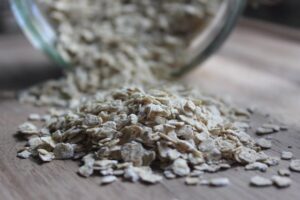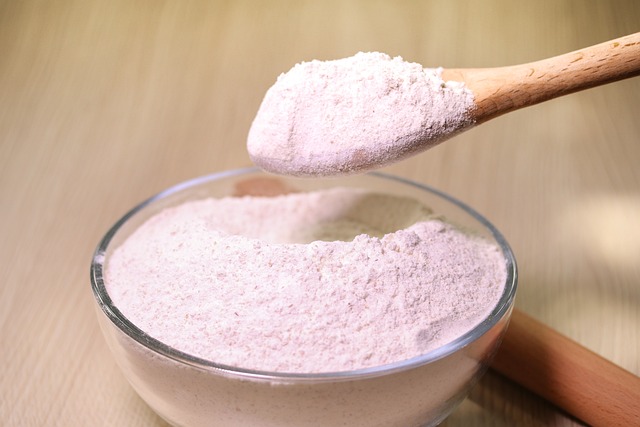Béchamel sauce is a timeless classic in culinary tradition. A key component in various dishes, such as lasagna, gratins, and croquettes, béchamel brings a creamy and rich texture that elevates a meal to new heights. Traditionally, this sauce relies on flour as a thickening agent to create the perfect consistency. However, whether due to dietary preferences, gluten intolerance, or simply a desire for variation, many people are seeking substitutes for flour in béchamel sauce. To enhance the flavor of the sauce, spices like nutmeg, white pepper, and bay leaf can be added, giving your béchamel a subtle warmth and depth.
Why Substitute Flour in Béchamel Sauce?

Dietary Restrictions and Gluten Intolerance
One of the most common reasons to seek a flour substitute is gluten intolerance. Gluten, a protein found in wheat, barley, and rye, can cause digestive issues and other health problems for individuals with celiac disease or gluten sensitivity. For these individuals, traditional wheat flour is not an option.
Experimentation and Flavor Variations
Even for those without gluten issues, experimenting with different thickening agents can enhance the flavor or texture of the sauce. Sometimes, a particular dish might benefit from a slightly different texture or flavor profile provided by an alternative ingredient, opening up new possibilities in the kitchen.
Health and Nutritional Benefits
Certain substitutes offer additional health benefits. For instance, chickpea flour is high in protein and fiber, making it a nutritious alternative to wheat flour. Choosing a substitute can also lower the calorie content or carbohydrate count of the béchamel sauce, which might be important for individuals on specific diets.
Flour Substitutes for Béchamel Sauce
Cornstarch as a Substitute
Cornstarch is one of the most commonly used flour substitutes for making béchamel sauce, thanks to its widespread availability and neutral flavor.
How to Use Cornstarch in Béchamel Sauce
Cornstarch is more potent as a thickener compared to flour, meaning you’ll need less of it. Generally, use half the amount of cornstarch as you would flour. For example, if a recipe calls for 2 tablespoons of flour, you’ll only need 1 tablespoon of cornstarch.
Cornstarch should be dissolved in a cold liquid (such as milk) before adding it to the hot sauce. This prevents clumping and ensures a smooth texture. Cook the sauce gently until thickened, and be aware that it will thicken more as it cools.
Texture and Flavor
Cornstarch creates a glossy, silky texture in béchamel sauce, but it may not be as rich as the flour-based version. The neutral flavor of cornstarch ensures that the sauce will taste much like the original, allowing you to use it in a wide variety of dishes without affecting the overall flavor.
Arrowroot Powder as a Substitute
Arrowroot powder is another excellent alternative to flour in béchamel sauce, particularly for those following a gluten-free diet.
How to Use Arrowroot Powder
Arrowroot is similar to cornstarch in its thickening ability. Use about half the amount of arrowroot powder as you would flour. Dissolve it in cold milk or another liquid before incorporating it into the hot butter or roux.
Texture and Flavor
One of the main benefits of arrowroot powder is its ability to create a light and clear sauce. It won’t cloud the milk as some other thickening agents might. The flavor is neutral, making it a versatile option for béchamel sauces that accompany delicate dishes such as fish or vegetables.
Cassava Root Flour for a Smooth, Gluten-Free Option

Cassava root flour (Manihot esculenta) is a highly versatile gluten-free alternative used in a wide range of culinary applications, including béchamel sauce. Known for its neutral flavor, cassava flour can easily mimic the creamy consistency of traditional wheat-based sauces, making it ideal for those avoiding gluten.
How to Use Cassava Root Flour
You can replace traditional flour with cassava root flour at a 1:1 ratio in most recipes. To ensure a smooth sauce, it’s important to whisk the flour thoroughly into the liquid to prevent lumps and allow the sauce to thicken evenly.
Texture and Flavor
Cassava root flour creates a silky, creamy sauce that closely resembles the texture of regular béchamel. Its mild taste allows the sauce to take on the flavors of other ingredients without overpowering them, making it suitable for a variety of dishes like casseroles, gratins, or pasta-based recipes.
Potato Starch for Creamy Béchamel
Potato starch is a gluten-free substitute that provides a smooth, creamy béchamel sauce, similar to traditional flour-based versions.
How to Incorporate Potato Starch in Béchamel
When substituting potato starch for flour, use the same quantity of potato starch as you would flour. However, you may find that the sauce thickens more quickly, so adjustments might be necessary depending on the desired consistency.
Texture and Flavor
Potato starch produces a thick, smooth sauce without altering the flavor of the béchamel. It works exceptionally well in casseroles, gratins, and other baked dishes. Be mindful that potato starch may continue to thicken the sauce as it cools, so you might want to use slightly less if the sauce will sit before serving.
Chickpea Flour for a Nutritional Boost
Chickpea flour, also known as gram flour or besan, is a protein-packed alternative to wheat flour. It adds a mild nutty flavor, which can complement dishes that benefit from a richer taste.
How to Use Chickpea Flour
Use chickpea flour in the same quantities as wheat flour when making a béchamel sauce. However, you may need to cook the roux for a slightly longer time to ensure that the chickpea flour loses its raw taste.
Texture and Flavor
Chickpea flour provides a creamier, thicker consistency compared to some other substitutes. However, it does impart a slight nutty flavor, which may not be suitable for every dish. This makes it ideal for more robust, savory dishes, such as gratins or casseroles, but perhaps less so for delicate recipes.
Rice Flour for a Light and Smooth Sauce
Rice flour is another popular gluten-free option for making béchamel sauce. It’s often used in Asian cuisine as a thickening agent and provides a smooth, light texture.
How to Use Rice Flour
Rice flour can be substituted at a 1:1 ratio with wheat flour. Like other alternatives, it’s essential to cook the roux thoroughly to avoid any grainy texture in the final sauce. Rice flour can sometimes create a slightly thinner sauce, so adjustments may be needed depending on your preferences.
Texture and Flavor
Rice flour creates a smooth and light sauce, perfect for use in lighter dishes such as fish, chicken, or vegetable-based recipes. Its flavor is neutral, ensuring that the sauce blends well with other ingredients.
Specialty Substitutes
Tapioca Flour for a Chewy Finish
Tapioca flour, derived from cassava root, is a versatile thickener that works similarly to arrowroot and potato starch. It’s a good option if you’re seeking a smooth, neutral-flavored béchamel sauce.
How to Use Tapioca Flour
Tapioca flour thickens more quickly than wheat flour, so use it sparingly—typically, half the amount of flour called for in the recipe. Mix it with cold liquid before adding it to the hot roux, and stir constantly to prevent clumping.
Texture and Flavor
Tapioca flour results in a slightly chewier texture, which may or may not be desirable, depending on the dish. However, it provides a neutral flavor and blends seamlessly into a wide variety of béchamel-based recipes.
Oat Flour for a Mildly Sweet Alternative

Oat flour is gaining popularity as a gluten-free substitute in many culinary applications, and béchamel sauce is no exception. Its mild sweetness works particularly well in creamy sauces.
How to Use Oat Flour
You can substitute oat flour at a 1:1 ratio with wheat flour. Be sure to cook the roux thoroughly to ensure that the sauce thickens properly and the oats break down into a smooth texture.
Texture and Flavor
Oat flour creates a thick, creamy sauce that may have a slightly grainy texture, though it’s less noticeable when used in small quantities. The flavor is mild and slightly sweet, which can work beautifully in dishes like creamed vegetables or savory pies.
Tips for Choosing Flour Substitutes in Béchamel Sauce
- Choose the right substitute based on your dietary needs and personal taste.
- Béchamel sauce is versatile and can be thickened with various substitutes.
- Cornstarch, arrowroot powder, and potato starch are gluten-free options.
- Chickpea flour and oat flour provide added nutritional benefits.
- Always tailor your béchamel sauce to suit the specific dish.
- For success, ensure the roux is properly cooked.
- Mix the substitute with cold liquid before adding to avoid lumps.
- Follow these tips to achieve a creamy and delicious béchamel sauce.

